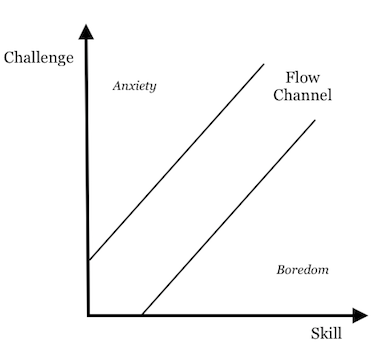
The American College of Sports Medicine recommends a minimum of 3 days of exercise a week. To achieve this, consistency is key. Most of us know this, however, many of us fail at it. Studies have shown that 50% of participants in exercise programs drop out in the first few months. Why? we fall into common pitfalls that prevent us from forming a long lasting habit of exercise. The good news is that our understanding of human behaviour and motivation has evolved and we now have tools we can use to implement these changes in our lives.
Here’s the bottom line: Exercise consistency is all about enjoyment. You may say that you hate exercise but guess what? Enjoyment is more malleable than you think. We can actually train ourselves to enjoy exercise more. Here are my top 3 “do’s and don’ts” that can help you exercise more consistently:
Self-monitoring is one of the corner-stones of behavioural change. Studies have shown that monitoring a few key metrics regularly increases adherence to exercise programs and can increase enjoyment by gamifying the experience. These metrics can be different from person to person depending on their individual goals. Using wearables to monitor your activity or smart scales to monitor weight or apps to monitor your food intake can all be powerful tools to keep us on track.
Seeing progress in your metrics can reinforce the habit of exercise earlier than it otherwise would. This is due to the shorter time it takes to see feedback from wearables in comparison to visually noticing weight for example. This reinforcement happens by closing the “habit loop”. The habit loop is a 3-step framework described in James Clear’s Atomic habits which starts with a cue that triggers a certain routine (your calendar nudging you to start a workout for example) and finally ends with a reward (the satisfaction you get from seeing your work pay off).
Studies have shown that the intensity and type of exercise can influence enjoyment. A study of twelve recreationally active adults were monitored while exercising at two different intensities: High intensity interval training for a short period and moderate intensity for a longer period. The Physical Activity Enjoyment Scale (PACES) completed after exercise showed a clear association between higher intensity training and increased levels of enjoyment.
Group-based exercise programs have been shown to increase adherence. Group sports and group leisure-time activities are associated with more enjoyment. One of the largest studies looking at different types of Copenhagen City Heart Study, followed 10,000 people over 20 years and grouped by the different sports they practice. An interesting finding was that group sports such as tennis and soccer were associated with better health outcomes.
The first step of building a good exercise program is to build a habit. Building a habit is about consistency. When attaching a habit to a specific time and place we are more likely to stick to it. That is why I advise people to go to a gym instead of working out at home even if you have the equipment. Going to a gym or training facility limits distractions and makes us more likely to complete our workout routine.
Over-tracking health markers can sometimes be anxiety inducing and counter-productive. The right amount of monitoring varies from one person to another. Some people might be motivated by monitoring every single biomarker they can while others might like to only check in with their wearable once a week or less often. The right amount of monitoring is what feels comfortable for you.
Another solution to this problem is to outsource tracking to an expert. This helps in only getting the insights that matter to you and allows you to focus on improving your health rather than researching ways to improve it. This is one of the top reasons why people choose Span.
In the beginning of an exercise program it is easy to fall into the trap of training too hard because that is when our conditioning is at its worst while our motivation is at its highest. However, this often leads us to dread the next workout due to fatigue, sore muscles or injuries. Ease yourself into it by training at 70% of your capacity to avoid challenging yourself too much to the point where you hate exercising and trigger anxiety. At the same time you want to avoid pushing yourself too little to the point where you find yourself getting bored. We want to reach flow; where the experience is just hard enough to be most enjoyable.

This might be controversial, but I think rewarding ourselves with a treat after a workout can be counterproductive. Our aim should be to increase the perceived enjoyment of the exercise itself, not the reward that comes after it. If you reinforce the mindset of hating the exercise but liking the reward that comes after, your perceived enjoyment of exercise will decrease and this can affect your adherence in the long run.